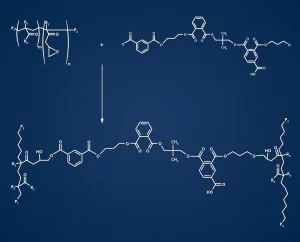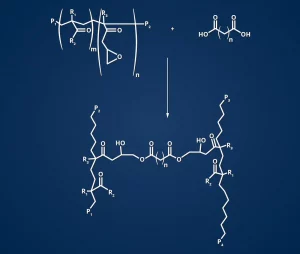More news
- Focus on industrial: Powering the energy industry during extreme heat
- Focus on powder coatings: The coatings industry’s transition to PFAS/PTFE-free solut...
- “We see sustainability as a purpose, as a reason for doing business” – P...
- Focus on industrial: High-performance coating protects tanks at biopolymer production plan...
- Focus on powder coatings: Novel high-speed crosslinking technology

Kevin Biller, Director, ChemQuest Powder Coating Research, gives an overview of the different acrylic-based powder coatings on the market, as well as the pros and cons of the technology
Acrylic powder coatings are one of the highest performance but most overlooked powder coating technologies. Solid acrylic resins and powder technology formulated with them have been around since the 1970s. In fact, some of the first thermoset powders were based on acrylics. Acrylics offer a panoply of impressive performance. Depending on formulation technique, they possess incomparable exterior durability, excellent chemical resistance and outstanding smoothness and gloss.
Solid acrylic resins can be functionalised with a variety of reactive groups that offer several curing options. Commercially available glycidyl, carboxyl and hydroxyl functional acrylic polymers give the powder formulator the possibility of designing urethane, hybrid, diacid and anhydride cure binder systems. The following is a summary of the acrylic chemistries available in powder coatings and the expected performance of each.
GMA acrylics
GMA acrylic powders are based on glycidyl methacrylate (GMA) functional acrylic polymers. These chemical groups react readily with carboxyl groups. DDDA (dodecanedioic acid) is the most common curing agent for GMA acrylic resins and is somewhat crystalline in nature. This physical feature enhances flow and leveling, which provides excellent smoothness and high gloss. GMA acrylics are well known for their superior weathering resistance, which easily eclipses 10 years of Florida durability. Not only does this technology possess excellent UV durability and scratch resistance, it also offers outstanding resistance to environmental contaminants (e.g., acid rain), petrol and automotive cleaners and chemicals.
GMA acrylic powders have been used as a high-performance clearcoat for automotive alloy wheels since the 1980s. In addition, BMW used clear acrylic powder topcoats for their 5 and 7 series cars produced from 1998 to 2014 in their Dingolfing, Germany, assembly plant. GMA acrylic powders are used for an array of other demanding coating requirements, including automotive exterior trim parts, door and security hardware, kitchen and bath water taps, and architectural trim components.
While GMA acrylic powders are typically cured between 175-190°C, speciality formulations can cure as low as 150°C and below. This opens the possibility of coating high-temperature plastics and composites.
Acrylic urethanes
One of the more interesting acrylic powder coating binder systems is based on crosslinking hydroxyl functional polymers with blocked isocyanates similar to those used in polyurethane powder coatings (polyester-urethanes).
Acrylic urethanes were quite popular in the 1980s, as the appliance industry used them mainly for range (cooker) side panels and in some cases for refrigerator doors due to their extraordinary stain and scratch resistance. During that era, vending machines were coated with acrylic urethane powders, especially those intended for outdoor use. These high-performance powder coatings carried a cost premium and have since been supplanted by lower cost powders that offer acceptable but lesser film performance.
Acrylic urethane powder coatings require relatively high temperature curing conditions (> 190°C) and offer outstanding hardness, chemical resistance, and outdoor durability.
Acrylic hybrids
One acrylic powder coating chemistry most suited for indoor applications comprises a carboxyl functional acrylic polymer cured with an epoxy resin. The epoxy resins used in this formulation platform are like the ones normally used in polyester hybrids and pure epoxy powder formulas. These systems are commonly referred to as acrylic hybrids.
Acrylic hybrids are similar in performance to polyester-based hybrid powder coatings, but they offer higher hardness and scratch resistance. In addition, acrylic hybrids possess excellent chemical resistance. These acrylic-based powders offer slightly better UV resistance than polyester-epoxy hybrids but cannot be considered outdoor durable because of the high epoxy resin content, which will cause the coating to fade and discolour when exposed to direct sunlight.
Acrylic hybrids cure at reasonable stoving conditions (160 to 190°C) and have been traditionally used to coat high-end laundry appliances (e.g., washers and dryers) and metal office furniture.
Acrylic polyesters
Acrylic polyester powders are a unique TGIC-free option for outdoor durable coating requirements. This chemistry may sound somewhat confusing, as it is based on reacting a GMA functional acrylic resin with a carboxyl-polyester. These two polymer classes are rather incompatible; when mixed, they therefore create attractive low gloss and matte finishes. UV durability of these coatings can be quite exceptional. Films are relatively hard and brittle, exhibiting good scratch resistance and somewhat poor impact resistance.
Acrylic polyester powder coatings are well-suited for outdoor end uses requiring smooth matte finishes, such as automotive trim and coatings for military hardware. Cure requirements range from 180 to 200°C, depending on formulation.
Table 1: Acrylic powder coating technology
| Powder type | Cure chemistry | Typical applications |
| GMA acrylic | Glycidyl Methacrylate – DDDA | Exterior Automotive, Farm Implement, Architectural |
| Acrylic urethane | Hydroxyl Acrylic – Blocked Isocyanate | Farm Implement, Architectural |
| Acrylic hybrid | Carboxyl Acrylic – Epoxy | Laundry Appliance, Lab Furniture |
| Polyester acrylic | GMA Acrylic – Carboxyl Polyester | Low Gloss Exterior Durable |

Curing reaction: GMA Acrylic with COOH Polyester

Curing reaction: GMA Acrylic with DDDA
Common drawbacks
The most common issues associated with acrylic powder technology fall into two categories: incompatibility with other powder coatings and high cost. Both issues are real. Most acrylic-based powder formulas are incompatible with common powder coating types (polyester, epoxy, hybrid and polyurethane) and will cause crater defects if introduced to an application system that uses a variety of powder types. This is due to a significant difference in surface tension between acrylic polymers and epoxy and polyester resins. Consequently, acrylic-based powders need to be isolated from other non-acrylic products. This can be accomplished by using dedicated acrylic application systems and/or thorough cleanup when switching from an acrylic to more traditional powder chemistries.
In terms of cost, acrylic powders typically command a premium price compared to polyester-based powder coatings. The high performance of acrylic powder coatings often justifies the additional cost.
Markets and the future of acrylic powder coatings
Acrylics are essentially the only powder coating chemistry that can meet the demanding requirements for exterior automotive exterior applications including clear topcoats, trim parts, and alloy wheels. More than one million BMW automotives have been coated with an acrylic powder topcoat and the coating performance has been outstanding. Exterior automotive trim parts and alloy wheels continue to be finished with acrylic powders.
As substrates evolve away from traditional metal, automotive trim parts fabricated with engineered plastics and composites can be powder coated with acrylic powders that can surpass even the most demanding automotive specifications.
An untapped but obvious end use is the high-performance architectural trim market. The demonstrated performance of acrylic powder coatings in the automotive industry provides the confidence to transfer this technology to architectural applications including Qualicoat Class 2 (3 years Florida) and Class 3 (10 years Florida) organic coatings. In addition, acrylic powders will comply with AAMA 2604 (5-year Florida) and AAMA 2605 (10-year Florida) architectural specifications in North America.
Recently, farming equipment manufacturers have increased their durability specifications to better align with the expectations of demanding customers. Acrylic-based powder coatings are definitely qualified to meet these higher UV durability and chemical resistance requirements.
Acrylic powder coatings have a promising future as finishing engineers begin to recognise the high performance possible with this unique technology. Finally, the use of acrylic powder technology should be explored for any application requiring exterior durability and excellent chemical resistance.
For more information: Contact the author at kbiller@chemquest.com or visit https://chemquest.com/cqpcr



